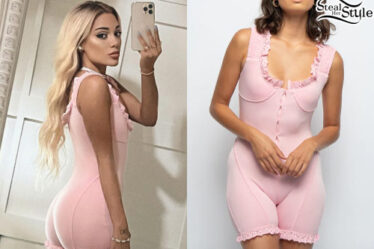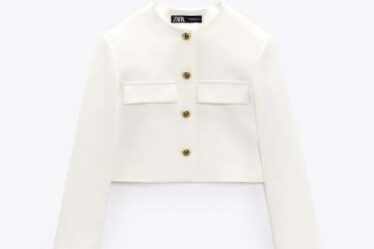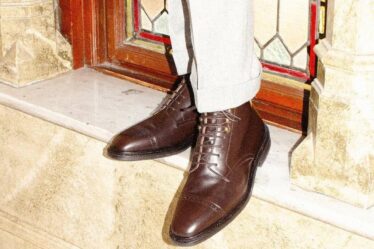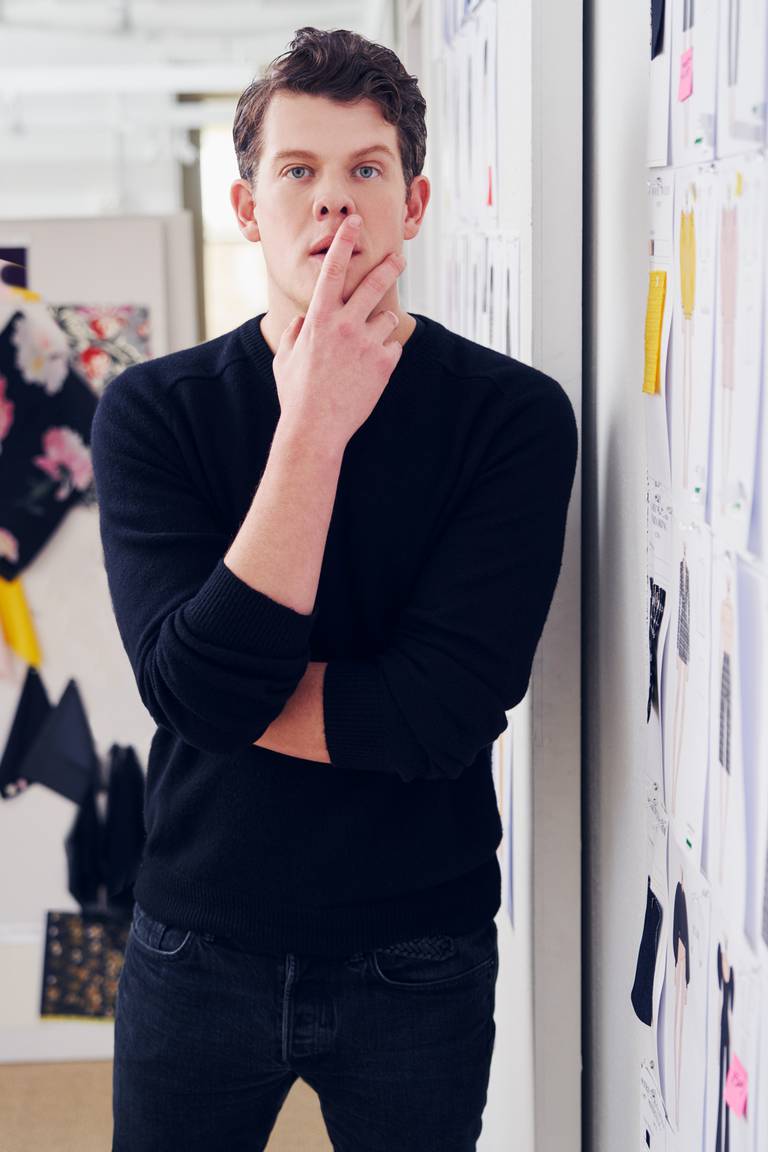
When Wes Gordon first met Carolina Herrera, there was an instant connection.
He admitted he was nervous to meet the legendary Venezuelan designer and socialite, who founded her brand in 1981 and went on to dress some of the world’s most famous women, from Jacqueline Onassis to Renee Zellweger (on the night she won her Oscar for “Cold Mountain”) to Michelle Obama. With poster boards displaying his vision for the future of the brand in hand — which he had just finished presenting to Carolina Herrera president Emilie Rubinfeld and executives from parent company Puig — he entered her office in the heart of New York City’s garment district.
He assumed that she’d grill him about his presentation and his thoughts on the business.
“She did that with me for maybe three minutes,” Gordon recalled of their 2017 meeting in an interview with The Business of Fashion at the end of January. “And then she spent another hour just trying to get to know me as a human. We talked about the books we were reading, the TV shows we were watching, our dogs. I can’t emphasise enough the importance of establishing that trust. We were very different, but also, in many ways, were able to find beautiful bonds.”
Conversational chemistry isn’t necessarily a prerequisite when it comes to choosing a successor. But that first meeting underscored the shared sensibility between the two designers, one that has proved valuable since Gordon succeeded Herrera as creative director in 2018, after a year shadowing her as a consultant.
Six years later, the Carolina Herrera business has undergone what José Manuel Albesa, president of Puig’s beauty and fashion division, calls a “profound transformation.” It’s evolved its trademark elegant, feminine aesthetic while growing the business. Since Gordon took over in 2018, the brand’s number of domestic wholesale doors has more than doubled. Though parent company Puig doesn’t break out Carolina Herrera’s performance specifically, the parent company, which also owns brands such as Jean Paul Gaultier and Dries Van Noten, saw sales rise by 40 percent in 2022 to $3.6 billion and forecasted double-digit growth in 2023.
The transition from Herrera to Gordon is a best case scenario for one of the most important and fraught decisions a designer will ever make. The question of succession feels especially relevant now, as iconic designers such as Giorgio Armani, 89, Miuccia Prada, 74, and Ralph Lauren, 84, reach the twilight of their careers.
There’s immense risk in making the wrong choice; the right successor, meanwhile, can breathe new life into a fashion house. But success is not just about choosing the correct person. At Carolina Herrera, it’s also been about evolving the brand’s codes, retaining a close relationship with top clients, investing in digital and e-commerce and working closely with the beauty side of the business to ensure the two can elevate each other.
“When we had the initial conversations with Wes, we really saw that passion for Carolina Herrera, for what the brand stood for and stands for,” said Rubinfeld. “He still has that same passion today.”
Why Wes Gordon Works
Gordon’s fashion career began when he launched his own namesake womenswear label shortly after graduating from Central Saint Martins in 2009. In its seven years in business, he saw designs stocked in Harrods and Bergdorf Goodman and worn by Michelle Obama and Gwyneth Paltrow; in 2014, he was named a finalist for the CFDA/Vogue Fashion Fund.
But running an independent fashion label isn’t easy, and the strain was starting to wear on him. He planned to wind down the business, and was seeking a new challenge. In that sense, the call from Rubinfeld came at the perfect time.
“My entire life, growing up in America, I had revered this house as a cornerstone of fashion,” he said. “To have the opportunity to inject a fresh perspective and think about what Herrera means to a new audience while still maintaining that elegance and beauty was the most exciting challenge.”
When he started as a consultant, there was no set timeline in place, but he took that period as “an opportunity to refine my vision for Herrera,” as well as study under the designer herself, learning from someone who approached fashion the same way he did.
“Carolina would always say he shared her eye, that beauty was not just a perfectly tailored jacket, but the environment it’s [displayed] in,” said Rubinfeld.

Once he was at the helm, however, Gordon needed to put his own stamp on the brand. He sees his job as interpreting the house’s codes for a modern day consumer, gently introducing concepts that can eventually become brand signatures.
For example, he’s kept classics, a crisp white button-down, as part of the brand’s stable, but incorporated more exaggerated versions, featuring an asymmetrical design or hand-cut flowers sewn on. As well, he’s introduced more colour into collections.
“He always said, ‘This is not my brand, I’m working for the continuation of the DNA, the heritage and the longevity of the brand,’’ said Geoffrey van Raemdonck, the chief executive of Neiman Marcus; the company has doubled points of distribution for Carolina Herrera during Gordon’s tenure.
As well, Rubinfeld added, Gordon, a Millennial, approaches each collection thinking about how it’ll appear online, whether in the brand’s own e-commerce channels or in a digital campaign. Since early 2020, the size of Carolina Herrera’s digital business has doubled.
At first, the shadow of the designer loomed large in his mind, questioning if she’d choose the same button, or pair a similar earring with a particular look. With time, though, he’s accepted that she might not agree with every decision he makes.
It’s helped that Mrs. Herrera has allowed him space, he said. In 2018, she stepped back from day-to-day involvement with the business. As a global ambassador for the brand, she still attends the brand’s show every New York Fashion Week — he admits that seeing her sitting front row always adds a layer of nerves — but that is the first time she sees each collection. She hasn’t returned to the office in the six years since her departure.
Still, they’ve maintained a personal friendship; Herrera has met Gordon’s children and they’ve been to one another’s homes for dinner. And, of course, her influence is still present.
“She’s really a role model in the sense that you can have that strong voice and be so graceful and kind at the same time,” he said.
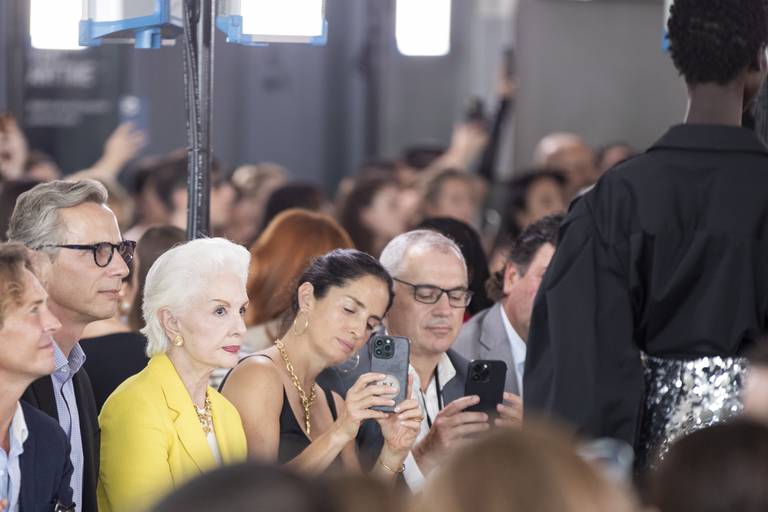
Listening to Clients
Earning the trust of the outgoing creative director is one thing — doing so with clients is another, particularly for a then-31-year-old man succeeding a then-79-year-old woman.
For Gordon, that relationship is built on a foundation of respect for women. “What drives me is a total awareness of the vast amount of beautiful clothes that exist in the world, the options that are available to women today. I want to make sure that if she chooses something from Herrera, it is perfect.”
Gordon said that customers have been some of his greatest teachers in taking on the top role. He travels as much as he can for trunk shows and client events to get to know clients on a personal level. Seeing what garments they love, talking to them about fit, the intentionality they put into their ensembles, has helped him hone his own design processes.
He’s also expanded the roster of who the Carolina Herrera client is. His designs have been worn by public figures like Meghan Markle, the Duchess of Sussex, but also internet personalities, like the influencer Christina Najjar, who is known by her online moniker Tinx. Last June, the brand staged its first international runway show in Rio de Janeiro to present its Resort 2024 collection. The location may have been new, but it was one that made sense considering Herrera’s own South American roots.
“He designs for his customer,” said van Raemdonck. “There’s not an arrogance of ‘It’s about fashion. It’s about my view.’ It’s about serving the woman and making her beautiful and elegant. He’s using his creative juice so the woman wears the product.”
That understanding extends to other areas of the business, particularly beauty, which is run by Herrera’s daughter, Carolina Adriana Herrera. Fragrance has long been a powerhouse division of the brand; parent company Puig first partnered with Carolina Herrera in the late 1980s to manufacture its perfumes. But during Gordon’s tenure, Beauty has become a more substantial business. In 2020, the brand launched its first makeup collection.
While oftentimes a luxury label’s beauty business is farmed out to a licensing partner. With both sides of the business under Puig, there’s more connectivity between the two. The makeup collection, for example, is done in the bold colours that have become Gordon’s calling card, while in advertisements, ambassadors like Karlie Kloss — the face of the brand’s Good Girl fragrance — wear Carolina Herrera dresses.
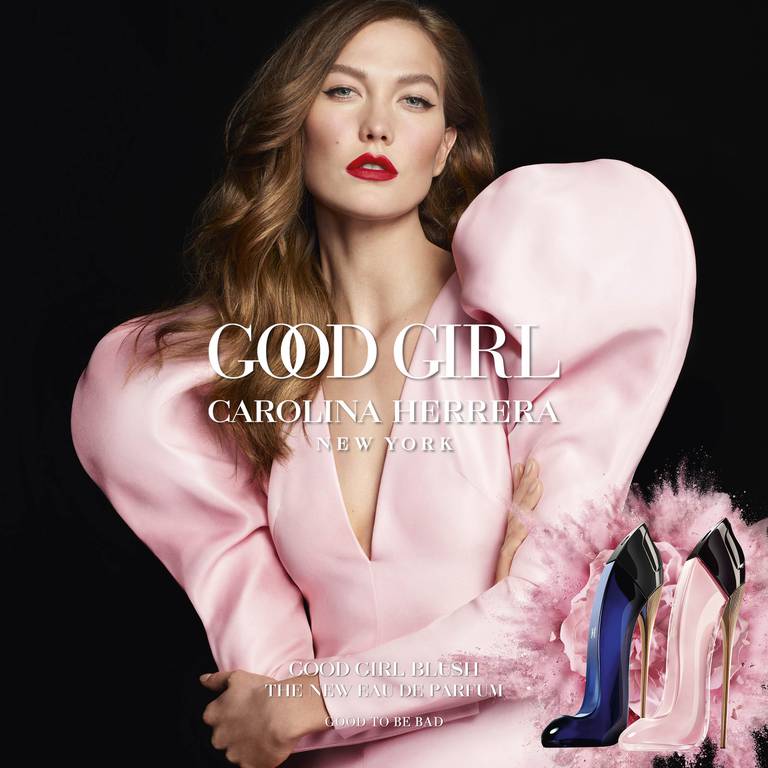
“Regardless of if you’re selling a lipstick or a dress, at the end of the day, you need to send a unified message that you’re a unique brand talking to the consumer,” said Ana Trias Arraut, Carolina Herrera’s chief brand officer.
That vision will be on full display on Monday morning, when the brand presents its latest collection on the 41st floor of a downtown Manhattan skyscraper. Show attendees — who will receive the brand’s “Fabulous Eyes” mascara as a favour — will watch a parade of brightly-hued dresses, suits and more move down the runway.
The clothes, as always, will look different from many of New York Fashion Week’s other buzzy catwalks, which fit more into a very capital-F fashion, downtown New York aesthetic, filled with neutrals and more severe looks. But the brand relishes the contrast.
“There will always be a client who wants beautiful, feminine, elegant clothes, whether it’s for day or night,” said Rubinfeld. “That’s our superpower.”

